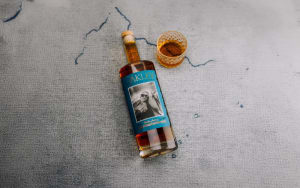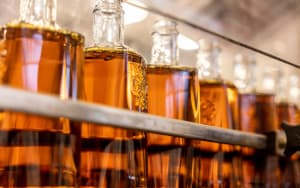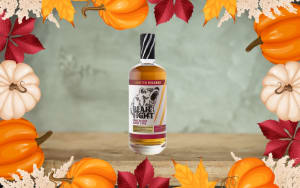In the rolling hills of Lawrenceburg, Kentucky, where the air still carries the faint caramel sweetness of aging barrels, Four Roses Bourbon has been crafting its legacy for over a century. Founded back in 1888, this American icon has weathered Prohibition, economic booms, and everything in between, becoming a staple on bar shelves and in family traditions across the country. It's the kind of whiskey that tells stories—of quiet evenings on the porch, raucous gatherings around a fire pit, and the simple satisfaction of a well-poured dram after a long day's work. But now, whispers from across the Pacific suggest that story might be up for a new chapter. Japanese powerhouse Kirin Holdings, the longtime owner of Four Roses, is quietly shopping the brand around, with a price tag hovering around the billion-dollar mark. It's a move that's got bourbon enthusiasts and business watchers alike raising their glasses in equal parts toast and trepidation.
Picture this: It's a crisp fall morning in Tokyo, and executives at Kirin are poring over spreadsheets that paint a sobering picture. Beer sales in Japan, once the lifeblood of the company, have been sliding for years. Younger folks are opting for craft brews or skipping alcohol altogether, leaving giants like Kirin to scramble for footing. In the first half of this year, through June 30, the company's alcoholic beverages arm clocked in consolidated revenue of 492.62 billion yen— that's about $3.22 billion at current exchange rates. Not bad on paper, but dig a little deeper, and you see the 3.9% drop year-over-year, driven by shrinking sales volumes across the board. Sure, their "normalised" operating profit edged up 5.7%, a small win in a tough game, but it's clear the old playbook isn't cutting it anymore.
Kirin isn't just any player in the drinks world; it's a sprawling conglomerate pulling in more than $15 billion in annual sales. You've got the beer side, with household names like Kirin Ichiban that evoke images of ice-cold refreshment on a humid summer day. Then there's the spirits arm, including the quirky Voodoo Range that's found a niche among adventurous palates. But layered in there is Kyowa Kirin, the pharmaceuticals unit that's quietly becoming the star of the show. As Japan grapples with an aging population and rising healthcare demands, this division is where the real growth lies—steady, reliable, and far less fickle than the ebb and flow of bar tabs.
So, why offload Four Roses now? It's all part of a deliberate pivot. Kirin has been methodically shedding what it calls "non-core" assets—those spirits and other beverages that don't align with its sharper focus on health and wellness. The bourbon brand, snapped up back in 2002 when Kirin saw untapped potential in America's whiskey renaissance, has been a solid performer. Sources close to the deal peg its adjusted annual earnings at around $70 million, a tidy sum that underscores why it's attractive to buyers. But in Kirin's grand strategy, it's a distraction from the bigger bets on biotech and meds that promise long-term stability. This isn't a fire sale; it's a calculated trim to fuel the engine that's actually accelerating.
The process kicked off quietly in recent weeks, with Kirin tapping Swiss banking heavyweight UBS to sound out interest from prospective suitors. Think major players in the spirits game—maybe a rival distiller eyeing Kentucky real estate, or a private equity firm hungry for a heritage brand with room to grow. First-round bids could land as early as next month, setting the stage for what could be one of the biggest bourbon deals in recent memory. Of course, nothing's guaranteed. Deals like this can fizzle if valuations don't align or if the stars don't quite match up. When reached for comment by industry watchers at Just Drinks, a Kirin spokesperson kept it tight-lipped: “At this time, there is nothing we can confirm regarding the report, and we have no comment to offer.” Classic corporate poker face—say just enough to intrigue, but reveal nothing that tips your hand.
For those who know Four Roses, this news hits close to home. The distillery in Lawrenceburg isn't some faceless factory; it's a working monument to craftsmanship. Rows upon rows of white oak barrels stacked like sentinels in rickhouses, each one imparting vanilla, spice, and that signature floral note unique to the brand's 10-recipe mash bill system. It's produced there year-round, with master distiller Brent Elliott and his team overseeing every step from grain to glass. Bourbon purists rave about the Small Batch Select, a no-age-statement gem that's bold yet balanced, perfect for sipping neat or mixing into an Old Fashioned that stands up to any classic. And let's not forget the history: That 1888 founding by Paul Hugh Jones, a Louisville pharmacist with a knack for blending, laid the groundwork for a whiskey that's as much about resilience as it is about flavor. Through wars, droughts, and market shifts, Four Roses has endured, even navigating the post-Prohibition wilderness when many others folded.
But here's where the rubber meets the road for American whiskey lovers: What does a sale mean for the brand's soul? Will a new owner double down on expansion, maybe ramping up production to chase the global thirst for premium bourbons? Or could it lead to tweaks in distribution, shaking up availability in your local liquor store? The U.S. market is booming—exports hit record highs last year, with bourbon leading the charge as our signature spirit on the world stage. Four Roses has carved out a loyal following, especially among those who appreciate its approachable price point without skimping on quality. A $1 billion handover could inject fresh capital for innovations, like limited-edition releases or sustainable sourcing from Kentucky's fertile farms. On the flip side, if it's scooped up by a conglomerate more interested in margins than mash bills, some fear it could dilute that handmade charm that's kept fans coming back.
Zoom out, and Kirin's maneuver fits a broader pattern in the global booze business. Japanese firms have long been savvy investors in Western icons—think Suntory's grip on Jim Beam or Asahi's stake in craft beer upstarts. But with domestic headwinds like Japan's beer slump, they're rethinking portfolios. Kirin itself is doubling down on Southeast Asia, where the drinks scene is fizzing with potential. Just last month, they unveiled a new office in Malaysia, a hub for pushing Kirin Ichiban and ready-to-drink options into bustling markets like Singapore, Thailand, and the Philippines. Supplies flow from plants in Japan and China, blending tradition with tropical appeal. It's a reminder that in this industry, adaptation isn't optional—it's survival. While Four Roses represents a slice of Americana, its fate ties into these far-flung strategies, where a Kentucky barrel might fund a clinic in Osaka.
As bids trickle in, the bourbon world holds its breath. Could this be the spark for Four Roses to claim even greater heights, perhaps eclipsing its siblings on the shelf? Or is it a bittersweet farewell to an era? One thing's certain: Whiskey, like life, doesn't stand still. It ages, it evolves, and it rewards those who savor the journey. For now, grab a bottle, pour a measure, and raise it to the unknown. Whatever comes next, Four Roses has earned its place in the pantheon—and that's a legacy no sale can barrel away.
In the end, this saga underscores a timeless truth: Even icons adapt. Kirin's shift from suds to serums might just ensure Four Roses thrives under new stewardship, pouring pride into generations yet to come. Keep an eye on those bids—history, it seems, is always one pour away from the next twist.




